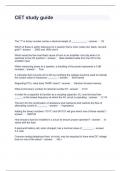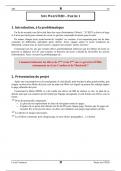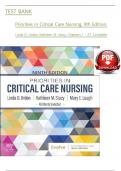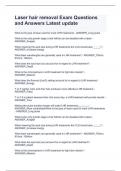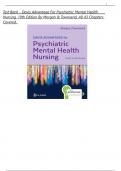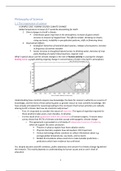Cells are the basic unit of life
200-300 types of specialised cells
Cells -> tissues organs organism
Cell architecture
• Cell membrane
• Organelles
o Plasma o Endoplasmic o Lysosomes
membrane reticulum o Golgi apparatus
o Nucleus o Vacuoles o Centrosome
o Mitochondria o Ribosomes
• Cytoskeleton
Cell function
• Metabolism • Motility
• Communication • Defence
• Transport
Disease – disruption of proliferation, differentiation or apoptosis is the basis of many altered health states
Cell communication
• Cells need to sense and respond to their environment
• Cells must be able to
o Sense stimuli
o Integrate diverse inputs
o Produce appropriate biological stimulus
• Must communication with other cells to enable correct cellular, tissue and organ function
Response rate to stimuli
• Varies depending on ligan and receptors type
• Fast responses – ion channels, CNS/PNS
• Medium response – enzyme activity
• Slow response – gene expression
Cells respond to multiple signals
• Environmental and internal signals to survive, grow and differentiate
o Tropic and death factor survive
o Mitogenic factors divide
o Growth/tropic factors, morphogens differentiate
• Potential responses
o Proliferation – mitosis by mitogens (cyclins, CDKs, Rb, E2F, wee, cak, MPF, cdc25)
o Differentiation – specific chance in protein expression or activity leading to alteration of
function ‘maturation’ (receptors, cytokines, CAM, cytoskeleton, channels, signal
transduction, components)
o Life span – apoptosis autophagy (FasL, death receptors, AKT, p53, caspases, mdm2, survivin)
Signalling involves energy conversion
• Signals from external environment may be physical or chemical – e.g., light, sound, touch, odorant
• External signals converted to nerve signals (electrical) or chemical signals (ATP/GTP)
1
,BHCS2004 Summary Notes
• Cells in a mature organism must respond to signals to survive, adapt and be successful in their
environment
The same signalling molecular can induce different responses in different target cells
• Hormones
o Insulin o Testosterone
o Adrenaline o Glucagon
• Neurotransmitters
o Glutamate
o Acetylcholine
In heart muscle – decreases rate and force of contraction
In skeletal muscle – starts contraction
o Opioids
• Local mediators
o Histamine o Growth factors
o Bradykinin o Nitric oxide
o Cytokines
Signalling involves signalling cascades that diverge and converge
• Unwanted/dying cells are removed in response to death signals
• Death signals death receptors adaptors 1st-level caspase (activators) 2nd-level caspases
(effectors)
Signalling alters cell activity with different time and scales of effects
Signalling involves signal amplification – small stimulus (e.g., low [cytokine] or low receptor expression) still
induces a large response
Where signalling involves an internal chemical stimulus, 5 general signalling modes are recognised
• Endocrine – messenger produced by one cell is released into blood stream and acts upon another
cell at a distance (e.g., insulin, noradrenaline)
• Paracrine – messenger produced by cell activates another cell locally (e.g., histamine)
• Neuronal – specialised signalling involving electrical activity along axons and release of signal at
distance from cell body (e.g., glutamate)
• Contact – cell adhesion molecule involving contact-dependant signalling; involved in structural
integrity or cell migration (e.g., integrins)
2
,BHCS2004 Summary Notes
• Autocrine – messenger produced by cell and is released to activate same cell (e.g., il-2 in CD8/4+
memory cells, T/B cells)
• Some signals span groups
o Oestrogen – endocrine steroid/autocrine effects
o TNF - paracrine/endocrine-like actions
Major receptor systems
• Ionotropic
o Receptors that are ion channels
o Ligand gated
o E.g., glutamate receptors, ACh receptor (nicotinic)
• Metabotropic
o G-protein coupled receptors
E.g., NE receptor, Met-glutamate receptor, ACh (muscarinic)
o Enzyme-linked receptors
E.g., insulin receptor, GF receptor, cytokine receptor
• Regulated by protein degradation
o Wnt/B-catenin
o Hedgehog
o NFB
• Regulated by protein cleavage
o Notched/Delta
• Also, further receptors activated during cell contact via integrins
The disruption of cell signalling pathways results in disease – important to understand mechanisms which
underlie pathways and dysfunction
Ras pathway – links TFs for regulatory genes for proliferation; overactivity = tumorigenesis
Ionotropic receptors
Ionotropic receptors are ligand-gated ion channels
• Membrane spanning (transmembrane)
• Consists of multiple subunits which forms pore
• Must have two -subunits – the ligand interacts with the -subunits
• Amino acids in -domain determine selectivity of the channel (what ion goes through it)
• Na+, K+ in; Ca2+, Cl- out
• 4/5 domains form the channels
Different classes of receptors can exist for 1 ligand – e.g., glutamate
• Glutamate is the most common excitatory neurotransmitter
• 3 main classes of receptor
o AMPA
o NMDA
o KA
• The different classes have the same -subunits (which bind glutamate) but different specific
combination of the other subunits
• E.g., NMDA – heteromeric combination of 1 principal subunit (NR1) and any of the 4 modulatory
subunits (NR2A-NR2D)
• AMPA and KA only allow Na+ in to depolarise membrane
3
, BHCS2004 Summary Notes
• NMDA allows Na+ and 2nd messenger Ca2+ which modifies effector proteins to start signalling
cascade
Ligand Receptor Ion Response
Glutamate AMPA Na+ Fast depolarisation
Glutamate KA Na+ Fast depolarisation
Glutamate NMDA Na+, Ca2+ Slow depolarisation, 2nd
messenger activation
Opening of ligand-gated channel
• Ligand binds to -subunit which changes structure of channels and modifies its charge
• Change in structure change in function (ALWAYS)
• This is an allosteric change/interaction
• Conformational allosteric change in protein pore configuration allows ion influx – channel
conductance
• Most ligand-gated channels are non-specific cation channels
Regulation of ion channels by channel modulators and co-agonists
• Co-activists needed for channel to fully open
• Mg2+ (and zinc ions) – antagonists
o At resting membrane, NMDA receptor blocked by Mg 2+ - Voltage-dependant Mg2+ block
o Mg2+ block removed by depolarisation (approx. 15-20mV) when ligand binds
o NMDA channel is ligand and voltage-gated
• Glycine – NMDA channels has binding site for glycine; glycine binding modulates NMDA channel
current
• Channels can also be blocked by drugs – e.g., ketamine
Channel gating accompanied by rapid cell response
• Within milliseconds
• When Na2+ depolarises a membrane, this opens v.g. Na2+ channels down membrane – propagates
action potential
• GABA
o Inhibitory neurotransmitter
o Allows Cl- influx which hyperpolarises membrane so action potential less likely (further from
threshold potential)
Medium/long term change responses
• Seconds/minutes
• Activation of signal transduction pathways (by 2nd messengers)
• Post-translational modification
Ca2+ as key 2nd messenger
• Ca2+ binds to calmodulin in cytoplasm
• Calmodulin has 7 Ca2+ binding sites
• Ca2+ binding induces allosteric change which activates calcium/calmodulin (CaM) effector protein
• CaM activates calcium-dependant kinase, CaMKII which phosphorylates membrane channels to
increase their sensitivity to ligands
• Usually, CAMKII targets channel which originally released Ca2+ into membrane-positive feedback
mechanism
• This is the signal transduction pathway
4

